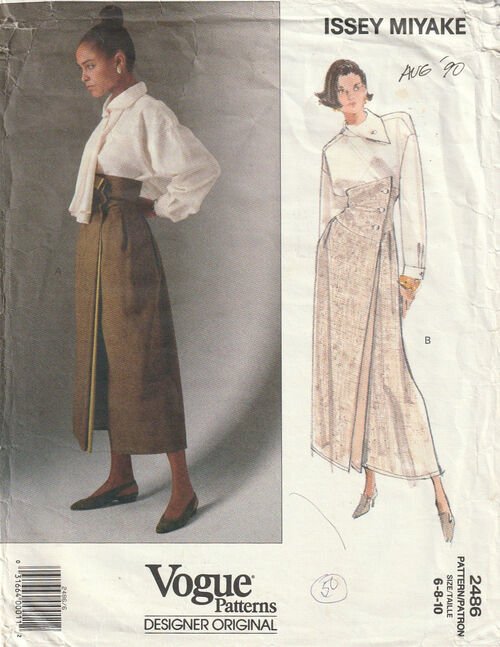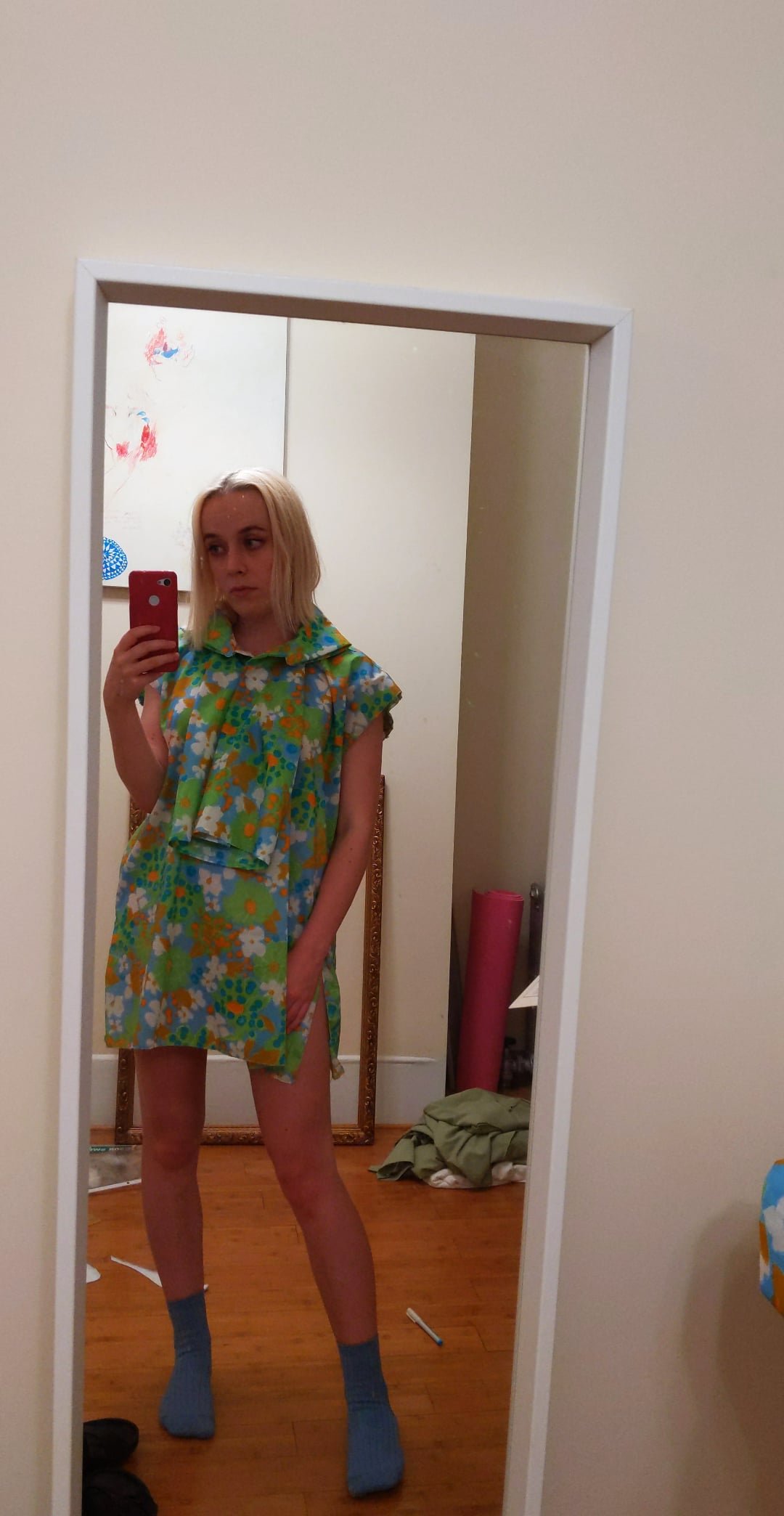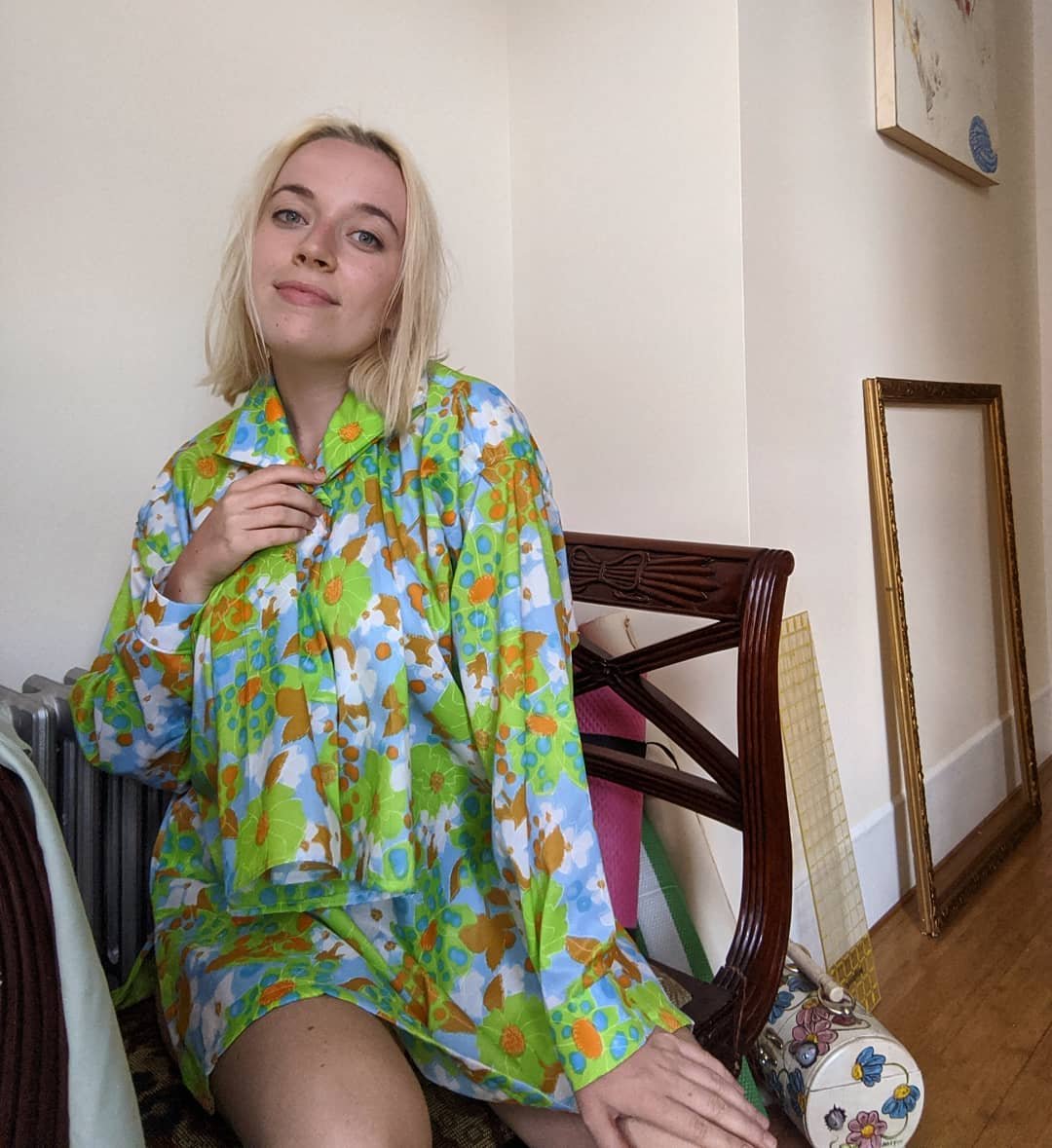Sewing Issey Miyake Pattern 2486
In April I bought Vogue Pattern 2486 which is one of their "Designer Originals" from 1990 done by Issey Miyake. I got it for $40 which is the most I've spent on a pattern so far but actually a good price for Miyake patterns and in particular that one which I normally see for $80-$100, though I think they're fairly slow to move. Frankly I think there's basically no market for them besides in collectors of either Miyake or sewing patterns as most home sewists don't make avant garde clothing, which is too bad. Miyake released patterns through Vogue from 1983 through the "Vogue Individualist" and "Vogue Designer Original" lines. As far as I can tell almost all of the 80s patterns were branded as "Individualist" and then in 1990 they switch over to "Designer Original", when they were released until 1993. I don't know anything about Vogue's branding strategy with their designer partners but it seems like many of the "Individualist" patterns were the more unusual or maybe younger contemporary designer releases like Adri, Claude Montana, Perry Ellis and of course Miyake, but maybe they just closed that line in the 90s and went with the more regional "American Designer," "Paris Original" and in Miyake's case "Designer Original."
In any case this was my first Miyake pattern, but not my first Designer Original since I've started (but never finished) an old 50s Dior dress. I own another Dior and a little Cardin set that I haven't made either. I've read about people complaining about how difficult Vogue patterns are and how much more underwhelming the instructions are in comparison to Butterick or Simplicity, and especially in the cases of designer releases I think that's true. I've made both tops in 2486 and the instructions don't even note adding the buttonholes at any point - I guess it's just assumed that you know where they go from the pattern. Or maybe they just didn't want to add a third instructions sheet, since the instructions for the set-in sleeves differ between the shirts which surprised me. Often patterns with two shirts that are fairly similar (the finishing is pretty much the same, as well as the sleeves and sleeve placement) will just note to use the same method for sleeve insertion and not replicate the instructions, but the sleeves go on differently -- the second variation has the sleeve seam in the back (like in some men's formal shirts), not along the side seams (like many ready-to-wear shirts do, and like the first shirt does). It's a thoughtful touch that makes the pattern a lot more rewarding to sew through. The first variation also has a back pleat detail.

The pattern description for the shirts reads, "Very loose-fitting, pullover blouse has collar variations, dropped shoulders, low armholes, side slits, stitched hems and long, two-piece effect sleeves with pleats and button cuffs. A: yoke with forward shoulders seams, front inset, back pleat and front placket opening. B: collar bands, button shoulder closing and French button cuffs. Purchased optional cuff links." I don't know what "two-piece effect" sleeves are. It's possible this means "the sleeves appear to be two piece sleeves" i.e. sleeves made with a top panel and an under panel, but this is inaccurate, as the sleeves to me appear to be one piece sleeves. Both shirts are very loose throughout with no darts or shape to the body but both have unique and very special collars, and the sleeves are really beautiful. I made view B in silk with a color blocked collar and sleeves which I think is to a really nice effect. I remember sewing with silk the first time a year ago or so and thinking I would never do it again because it was so difficult and slippery yet heavy, but now I've made a collared shirt and a wedding dress. It's worth it in the end because few fabrics look and feel so nice. I like crepe de chine but silk feels better and wrinkles less. I made view A in an awful 70s polyester floral I had too much of and I regret it, but view A has the uglier collar variation anyway. I can't remember if I used interfacing in view A - I think I did, out of respect for the pattern - but I definitely didn't use any in view B. I have never really understood the appeal of interfacing, which seems like more work for little payoff. Actually most nicely made clothes use interfacing to support or back buttonholes and collars, but I hate the added bulk. I'm relieved I didn't add in in view B since it would have been totally unnecessary, and I like to just let the silk fall "naturally". Leaving out interfacing, like refusing to make a muslin, is one of those things I do with my sewing that doesn't usually matter, until it's way too far gone to ever fix, and then it's a huge disappointment. I also did all the topstitching that is required in view A, which is kind of a gamble since I'm always sewing in a bit of a wiggly line, and then didn't do it for view B, but I actually did use matching red thread on the collar and cuffs. Matching thread is also something I rarely do except for when I'm home and have access to my mom's huge thread collection. It makes clothing look subtly nicer but it requires forethought and more thread colors which I usually don't have.
Below: cravat section of view A, selfie of me wearing view A without sleeves.


If this was a good sewing blog I would probably have tons of progress photos and specific notes on the process, what was difficult, what the instructions left out etc. This is just unhelpful musings on the pattern itself and my own unprofessional sewing process. It was a surprising pattern. At this point I own enough 50s dresses and vintage "Junior Miss" tops and skirt sets meant for 14 year olds that most pattern instructions don't surprise me even when they're challenging or work-intensive. Making the "front inset" which was really a sort of cravat-style tube on the collar of view A was very unusual because I didn't know what I was making until it was sewn up. Attaching the ascot collar to the collar band of view B was really fun. There are plenty of things I've never sewn which are very standard in clothing but this pattern is full of details which are very unusual. That's what's really special about Miyake. I could figure out how to make most pieces of commercial ready-to-wear clothing, or at least approximate it with an existing pattern, but Miyake patterns are very different in how they "go together" and have the kind of thoughtful construction only possible if you really know to sew.
Most of all now I want to sew the skirt of this pattern as a mini, and then to sew 2485 which is a coat made out of a rectangle. I also really want the blanket coat pattern 1859 which is very difficult to find.


View A, View B.
